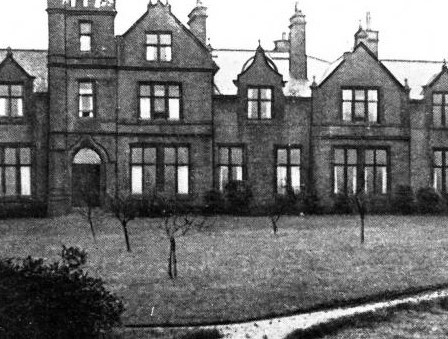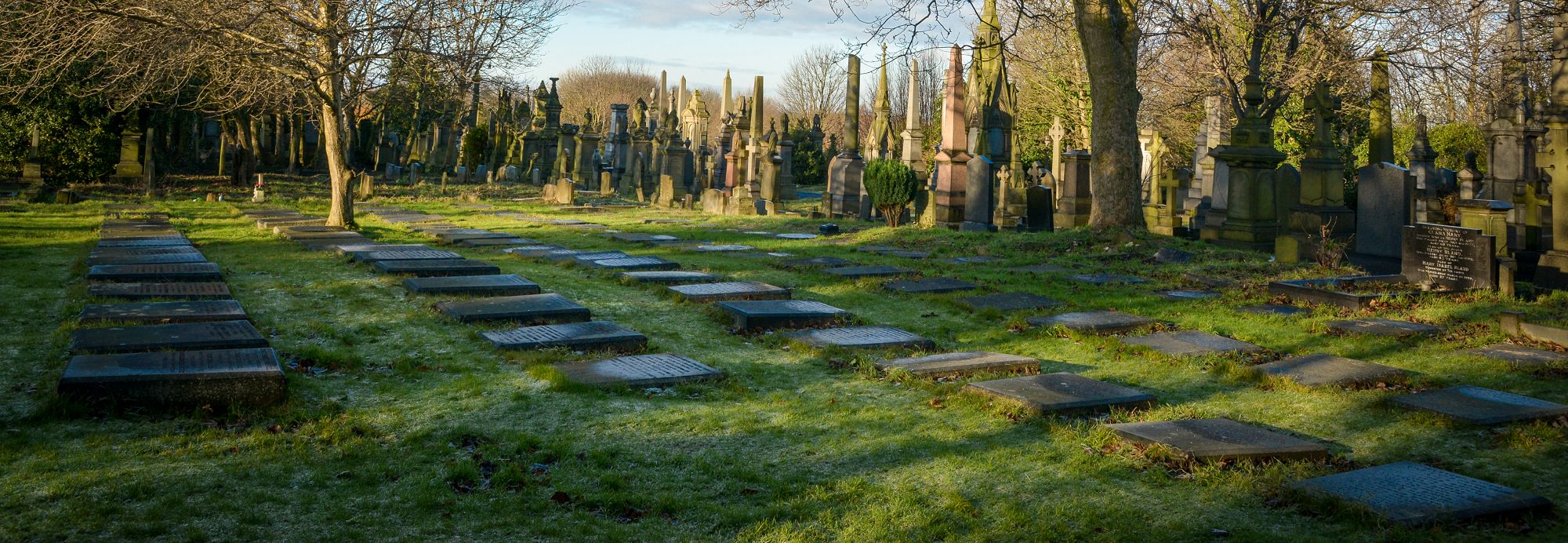Joseph Nutter
Grave number C267/8 Unconsecrated
On the 29th May 1884 the Newbury Weekly News & General Advertiser carried the following announcement:
Munificent BequestsMr. Joseph Nutter a retired cabinet maker from Bradford, who died last week in Halifax, his native town, has bequeathed nearly £20,000 to various benevolent objects and charities in Bradford and Halifax. He bequeaths £10,000 for the purposes of establishing at Bradford a home for destitute and orphaned boys. Among the larger benefactions to charities is £1,000 each to Halifax Infirmary, Bradford Infirmary, The Airedale Independent College and the Crossley Orphan Home at Halifax; and £500 each to the Bradford Fever Hospital, The Bradford Girls Orphans Home, Bradford’s Tradesmen Benevolent Institution, Bradford Aged Spinsters’ Fund, Ripley Convalescent Home, Port Hull Society, Royal Albert Asylum, and Yorkshire Congregational Union. £1,000 is also bequeathed for the establishment of scholarships in connection with the elementary Board Schools at Bradford and another £1,000 for the same object at Halifax.
So who was Joseph Nutter?
He was born on the 14 April 1799 to Matthew and Phebe Nutter of Pellon, Halifax. His father was a cabinet maker. Joseph had two older brothers, James and Matthew and an older sister Elin. Sadly, Matthew died in1803 when Joseph was only a small child and this may have influenced his choice of charities he left his money to when he died in 1884.
Times were hard as a child although his mother may have remarried in 1804 to William Dewhurst. William may not have wanted this family.
At the age of thirteen this quiet boy was apprenticed to his brother, probably Matthew who had a cabinet making business in Darley Street Bradford.
In 1821, Joseph married Sarah Taylor from Idle. They had no children.
Joseph did well and soon started his own business as cabinet maker and upholsterer, firstly in Westgate and then on North Parade. Prior to leaving Halifax he attended Square Chapel Sunday School and on arriving at Bradford became a member of Horton Lane Congregational Chapel Sunday School where his teacher was Robert Milligan who became Bradford’s first Mayor. Robert Milligan encouraged Joseph and Joseph received a loan from the Bradford Quakers to start up his business.
He was much liked by the people who came into contact with him. In 1850 he retired from his business handing it over two of his old apprentices, Mr. Prince and Mr. Christopher Pratt.
He became a councillor for Bradford and was on the Board of Guardians in 1857. During his life he helped charities and institutions in both Halifax and Bradford. He offered prizes for essays submitted at the Bradford Mechanics Institute; He had a similar scheme for Halifax and was a generous benefactor to the Baptist School at Pellon. He also assisted the West Borough Schools and the Airedale College for the training of Congregational ministers.
However, he preferred his philanthropy was not publicized and it was not until he died that his generosity was fully recognized. He strove to give young men the chance to get on in life.
He and Sarah lived in Southfield Place, Manningham before moving to Kensington Cottage, Kensington Road, Manningham where they lived until Sarah’s death in 1868 after which Joseph returned to his home town of Halifax. Joseph lived alone except for the help of a servant until his death on the 12 May 1884.
It may seem odd that one of his bequests was to Hull Port Society and Sailors Orphan Home. An article in a newspaper * may answer that query. The newspaper article was written on behalf of Mr. William Sharrah about his chance meeting with Joseph Nutter at a spa (The Grove Hydropathetic Establishment) in Ilkley in about 1874. The article states that Mr. Scarrah found Joseph old and infirm. William was there to enjoy a paid for break on the basis that he would read the scriptures with the patients both morning and evening. William Sharrah is described as a coast missionary with connections with the Sailors Orphan Home at Hull. Presumably due to Joseph’s health, William was asked to pray for him on more than one occasion. Through this connection they became friends and spent time discussing their beliefs and their drive to improve the lives of children. After fourteen days, William was leaving and Joseph accompanied him to the railways station and was quite emotional thanking William for his company. Later William received a letter with a contribution of £50. They met again whenever William brought children to Bradford and on one of these occasions, Joseph informed William of the £500 legacy in his will.
Nutter Orphans Home for Boys
Mayor and Alderman John Morley laid the foundation stone of the orphanage on 11 October 1888. The building was completed the following year.
Compared with today, life was hard for most working class children and so they could not expect better if sent to live in an orphanage. However, newspaper reports set out the treats the children did enjoy. From 1905 when it was opened, children were sent off for holidays to the Ambler House (named after its founder George Ambler and his family) at Morecambe. At Christmas there was a feast and gifts. In 1897 there was the usual Christmas party with a tree, presents and the Mayor at the time, Mr. Thomas Speight provided the meal for the orphans and then there were games and entertainment. It was the ritual that the boys were able to attend the pantomime free of charge. Those being long associated with the orphanage and its administration were Jacob Moser, William Moulson, Mr. J H Wade, Mr. F.W.T Newboult and Mr. Edward Dobson. It was admitted on this occasion that funds were low. Funds were made up of donations, proceedings from charitable events
The orphanage homed up to forty boys. At Christmas, 1901 Jacob Moser gave each boy five shillings. Those who were new to the orphanage got ten shillings! There were 39 boys at that time. Even as early as 196 it was reported there was more demand for places than room at the orphanage and the applicants had to be whittled to those they thought they could help Accommodating could be increased slightly by converting some attic rooms.
This struggle continued into the twentieth century. However, newspapers still reported on trips and treats for the children. In 1910, the great and the good had a garden party to promote a series of fund raising events for the next year.

The building ceased to be a children’s home in 1939 and the building was used for other council purposes but it was demolished in 2019.
A road still exists called Nutter Lane which led to the home.
**
Researcher: Deborah Stirling
Sources:
• Births, Deaths and Marriages,
• Probate Records
• * Wharfedale and Airedale Observer 15.08.1884
• Bradford Daily Telegraph: 07.10.1896; 02.03.1897; 06.12.1904; 24.12.1908
• Bradford Observer: 08.01.1897 and 02.01.19
• Bradford Weekly Telegraph: 07.06.1884; 07.10.1910 and 26.4.1912
• Leeds Intelligencer: 25.04.1857
• Leeds Times: 26.10.1861
• Newbury Weekly News & General Advertiser: 29.05.1884
• **Telegraph & Argus 18.10.2018

